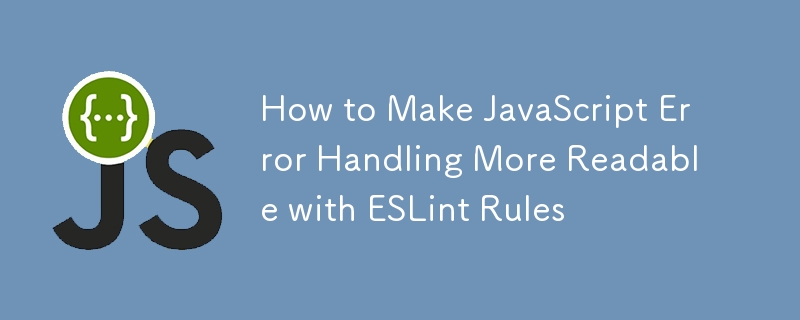
有效的错误处理对于任何健壮的 JavaScript 应用程序都至关重要。它有助于快速识别问题、简化调试并增强软件可靠性。本指南深入探讨通过 ESLint 改进 JavaScript 错误处理,ESLint 是一种增强代码质量并标准化错误处理实践的工具。
可读的错误处理提供了对问题的即时洞察,帮助开发人员有效地理解和解决问题。这种做法在团队环境中至关重要,对于长期维护代码也至关重要。
要增强 JavaScript 错误处理能力,请考虑以下策略:
try {
const data = JSON.parse(response);
console.log(data);
} catch (error) {
console.error("Failed to parse response:", error);
}
class ValidationError extends Error {
constructor(message) {
super(message);
this.name = "ValidationError";
}
}
try {
throw new ValidationError("Invalid email address");
} catch (error) {
console.error(error.name, error.message);
}
function handleError(error) {
console.error(`${new Date().toISOString()} - Error: ${error.message}`);
}
投掷版本:
function calculateAge(dob) {
if (!dob) throw new Error("Date of birth is required");
}
非投掷版本:
function tryCalculateAge(dob) {
if (!dob) {
console.error("Date of birth is required");
return null;
}
}
设置 ESLint 来强制执行这些实践涉及以下步骤和配置:
npm install eslint --save-dev npx eslint --init
有效的错误处理对于开发健壮的 JavaScript 应用程序至关重要。以下是 ESLint 规则,可以帮助您在代码库中实施良好的错误处理实践。
"promise/no-return-in-finally": "warn", "promise/always-return": "error"
"no-await-in-loop": "error"
// Incorrect
async function processArray(array) {
for (let item of array) {
await processItem(item);
}
}
// Correct
async function processArray(array) {
const promises = array.map(item => processItem(item));
await Promise.all(promises);
}
"promise/catch-or-return": "error", "async-await/space-after-async": "error"
"consistent-return": "error"
"no-unused-vars": ["error", {"args": "none"}],
"no-unused-catch-bindings": "error"
"no-throw-literal": "error"
// Incorrect
throw 'error';
// Correct
throw new Error('An error occurred');
"max-nested-callbacks": ["warn", 3]
"no-unused-expressions": ["error", {"allowShortCircuit": true, "allowTernary": true}]
"node/handle-callback-err": "error"
"no-console": "warn"
Ensure ESLint runs automatically before code commits or during CI/CD processes.
By adopting these ESLint rules and error-handling strategies, you elevate the readability and reliability of your JavaScript applications. These improvements facilitate debugging and ensure a smoother user experience.
Are you ready to transform your error handling approach? Implement these practices in your projects to see a significant boost in your development efficiency and code quality. Embrace these enhancements and lead your projects to success.
以上是如何使用 ESLint 规则使 JavaScript 错误处理更具可读性的详细内容。更多信息请关注PHP中文网其他相关文章!




